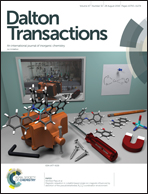Effect of the cation sublattice composition of tin-based type-I clathrates on their low-temperature thermal properties
Abstract
We performed an experimental study on thermal properties of the Sn18In6As21.5I8 clathrate by measuring temperature dependencies of its heat capacity (2–300 K) and thermal expansion (5–300 K). By comparing the results with those published previously for Sn-based clathrates Sn24P19.2I8, Sn20Zn4P20.8I8, and Sn17Zn7P22I8, we established that partial replacement of tin and phosphorus by heavier indium and arsenic, respectively, leads to lowering vibration frequencies in both host and guest substructures. Deviation of the observed thermal properties at low temperatures from those predicted by the Einstein–Debye model is caused by the Schottky-like contribution of two-level systems to heat capacity and thermal expansion. These systems form owing to transitions of guest atoms in non-spherical 24-vertex cages between stationary states with close energies.



 Please wait while we load your content...
Please wait while we load your content...